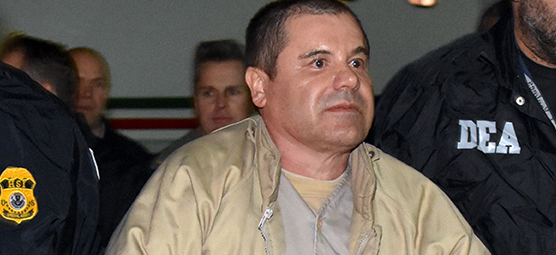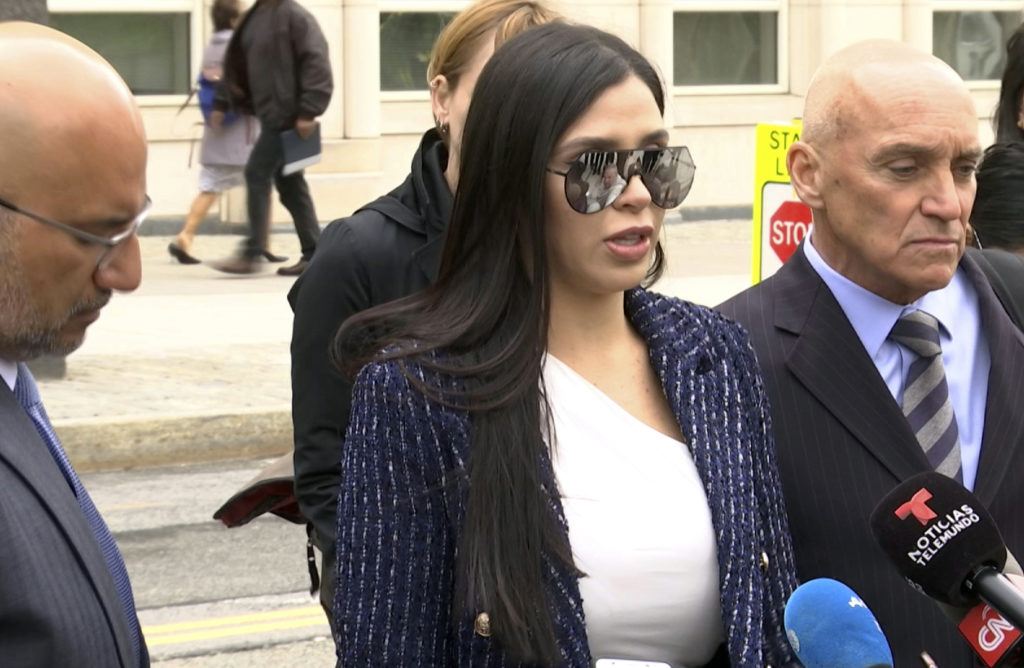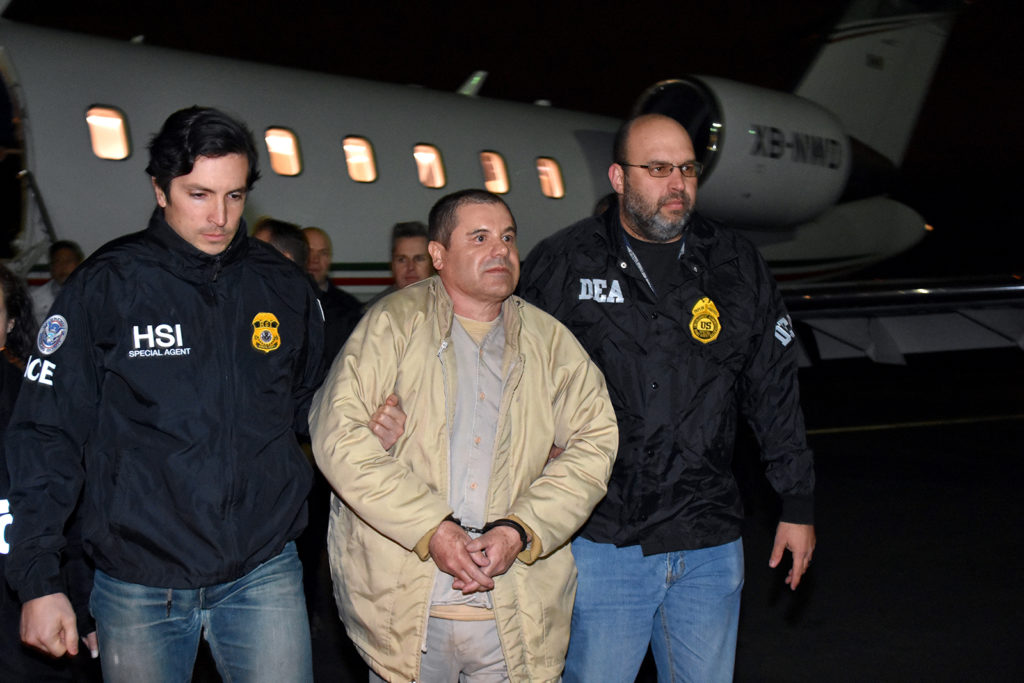‘El Chapo’ calls solitary confinement ‘torture 24 hours a day’
Mexican cartel boss continues to complain about jail conditions as feds win legal victories in pre-trial motions

Aging Mexican drug cartel boss Joaquin Archivaldo “El Chapo” Guzman Loera has described his life in solitary confinement while awaiting a federal criminal trial in the Manhattan Correctional Center in New York as “torture 24 hours a day” and so bad that “I cannot concentrate to help my defense.”
“I suffer from headaches every day,” the 61-year-old accused Sinaloa Cartel drug trafficking chief and alleged murderer wrote to a federal judge. “I vomit almost every day. They have not fixed two teeth and they are very painful. I have not seen the sun or breathed fresh air for 13 months in your country.”

Guzman’s statements were included in a personal letter, transcribed by his lawyers from his native Spanish, to U.S. District Judge Brian M. Cogan in February. In it, he laid out grievances about conditions in his jail cell and actions by federal prosecutors that he claims are preventing him from mounting his case against a slew of felony charges that, if he is convicted, would easily send him away for life in an American prison.
The diminutive drug kingpin (his Spanish nickname “El Chapo” means “shorty”) was indicted by a federal grand jury in March of last year on 17 charges that include overseeing a “continuing criminal enterprise” as leader of the Sinaloa drug syndicate that took part in murders and kidnappings, trafficking in narcotics (14 counts), using a firearm to further drug smuggling and conspiring to launder money.
The jury also recommended that Guzman be forced to forfeit $14 billion, estimated as his share of the proceeds related to illegal trafficking of cocaine, heroin, methamphetamine, cannabis and fentanyl in a criminal career that the prosecution said reaches back to the 1980s in Mexico.
The release of Guzman’s emotional letter, ordered by Cogan over requests for redactions by federal prosecutors, was one of the few positive developments recently for the defendant and his defense team, headed by Washington, D.C.-based private attorney A. Eduardo Balarezo. The defense and federal prosecutors continue to exchange motions in the months leading to the drug boss’s trial in Brooklyn that was scheduled to start this April but has been pushed to September 5.
To make a stronger case about Guzman’s living conditions in captivity, the defendant’s wife, the former Mexican model Emma Coronel, held a news conference on April 17 on the sidewalk outside the federal court building in Brooklyn. Coronel said the federal government had barred her from conjugal and other personal visits with Guzman, whom she said is suffering from physical and psychological problems as he languishes in solitary.
“He feels very bad, the lawyers have told me, and that worries me,” she told reporters in Spanish. “How is he going to get to trial if his health is not good?”
But prosecutors contend it makes perfect sense to bar visits from his wife. While in a Mexican prison from 1993 to 2001, El Chapo managed drug trafficking by the Sinaloa cartel through the assistance of his brother and routinely used prison visitors to pass on his orders, they said.

Guzman was extradited to the United States from Mexico in January 2017. He had successfully escaped from Mexican prisons in 2001 and 2015.
Prosecutors have stated that after both escapes, Guzman “had hundreds of armed guards and others to help him evade detection and recapture, suggesting a vast network of assistance in place even while confined.”
Furthermore, the prosecution reported that last year, some federal prisoners in California expressed support for Guzman days after his extradition to New York. These individuals stated they had “hitmen who are going to take care of” Guzman and that “everything is ready for you. What you say is the law. Here you have more than 3,500 soldiers.”
So far, the prosecution has provided Guzman’s lawyers with more than 300,000 pages of documents, intercepted and recorded audio and other communications and videos they intend to use as evidence against the defendant. The prosecution also will introduce videos of witness statements previously uploaded on YouTube.
Cogan has granted a number of key motions filed by prosecutors. In one, he permitted the government to empanel a trial jury that would be anonymous — no names released — and “partially” sequestered, meaning kept in guarded custody at some point during the trial.
The judge agreed that anonymity and sequestration would preserve the jury’s integrity and lessen fears among jurors of possible harassment or intimidation. Cogan cited a declaration by the grand jury about Guzman as proof of the dangers trial jurors may face.
The panel maintained that, as chief of the Sinaloa cartel, the crime boss “employed ‘sicarios’ or hitmen, who carried out hundreds of acts of violence, including murders, assaults, kidnappings, assassinations and acts of torture at the direction of the defendant.”
Guzman, the grand jury reported, ordered those acts to impose discipline among his henchmen “by punishing disloyalty and failure …” and to protect cartel members “from arrest and prosecution by silencing potential witnesses and retaliating against anyone who provided information or assistance to law enforcement authorities.”
In response, Guzman’s lawyers argued that an anonymous and sequestered jury would give “the extremely unfair impression that he is a dangerous person from whom the jury must be protected.”
Guzman’s attorneys in April also criticized prosecutors for not providing the names of expert witnesses expected to testify against their client, despite a request filed last September.
They also stated that by nature of the organized crime conspiracy the grand jury has alleged Guzman took part in, “the bulk of the evidence against him will be presented in the form of cooperator/co-conspirator testimony [and so] Mr. Guzman will be severely prejudiced at trial by the wholesale and unfiltered introduction of hearsay statements that may not have been made by alleged co-conspirators during and in furtherance of the charged conspiracy.”
Feedback or questions? Email blog@themobmuseum.org





